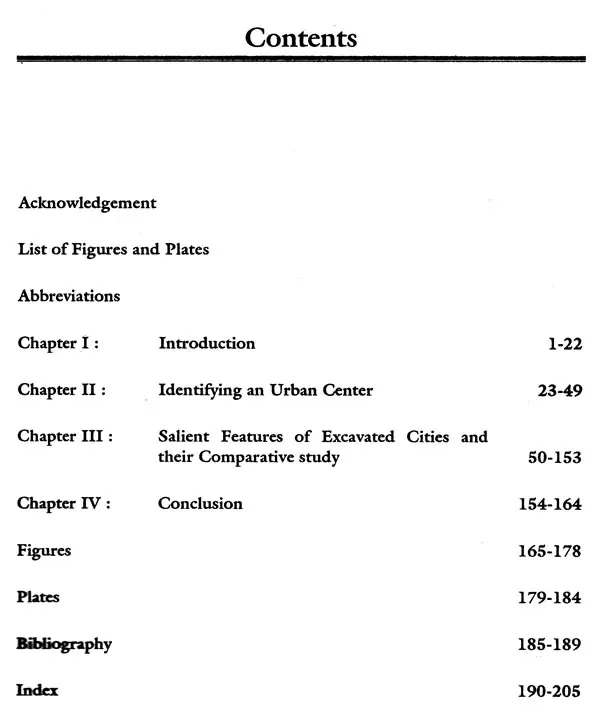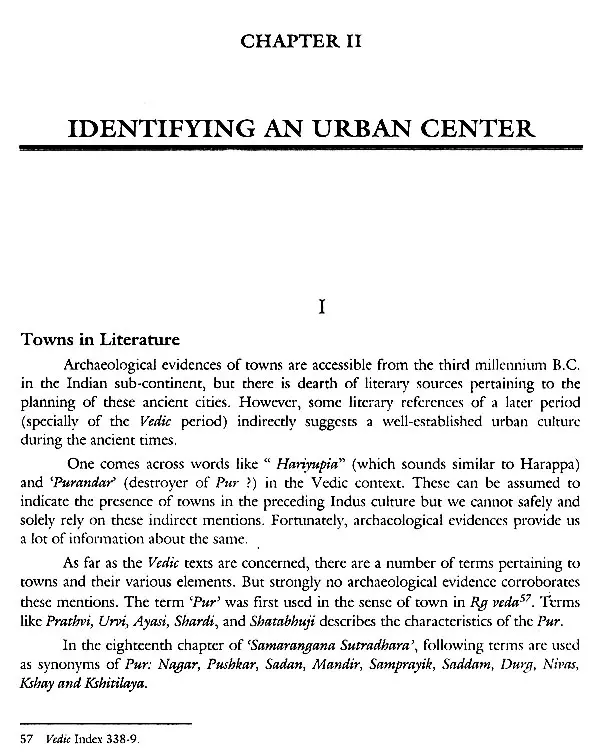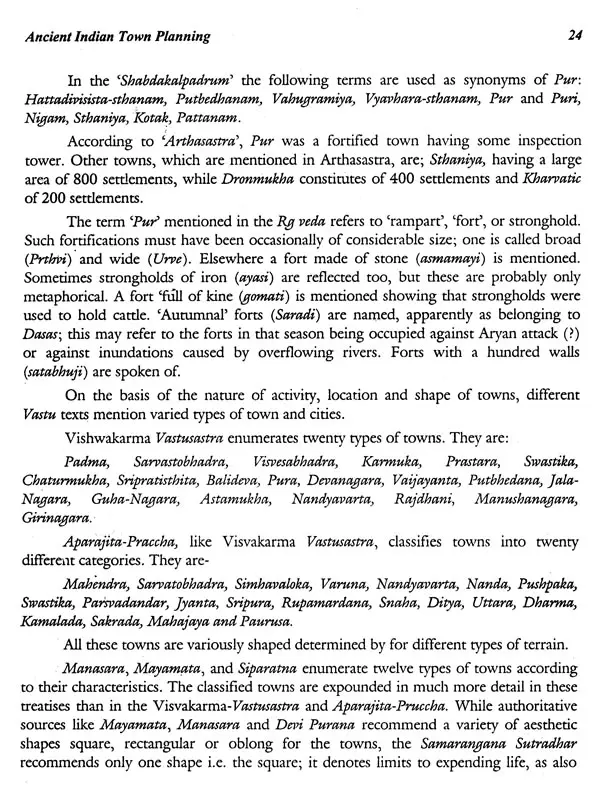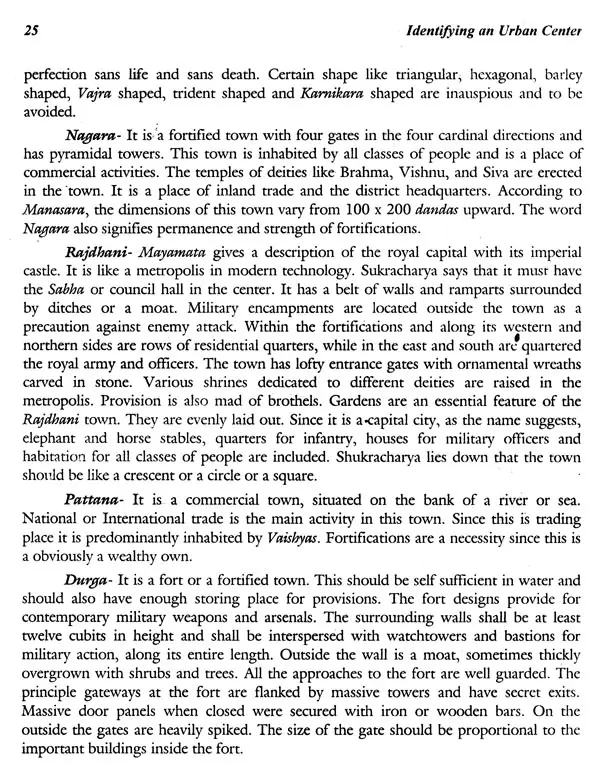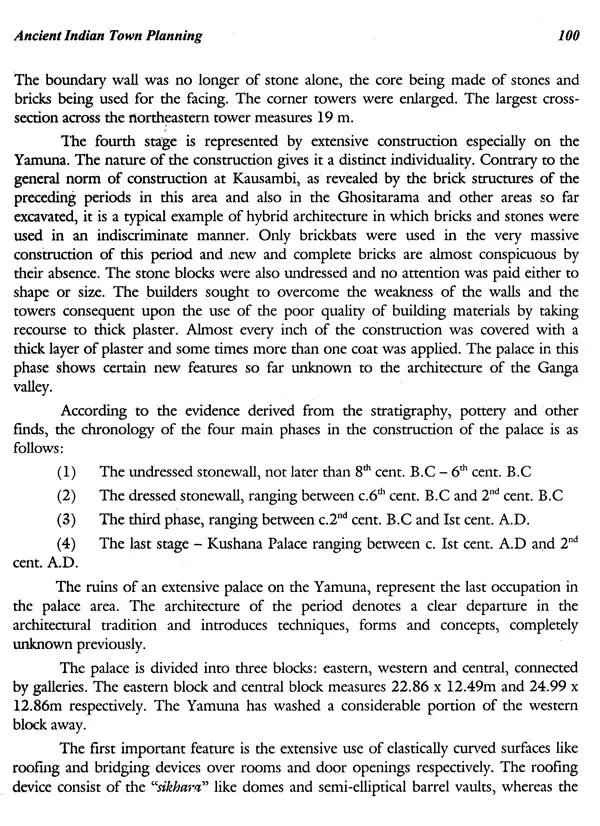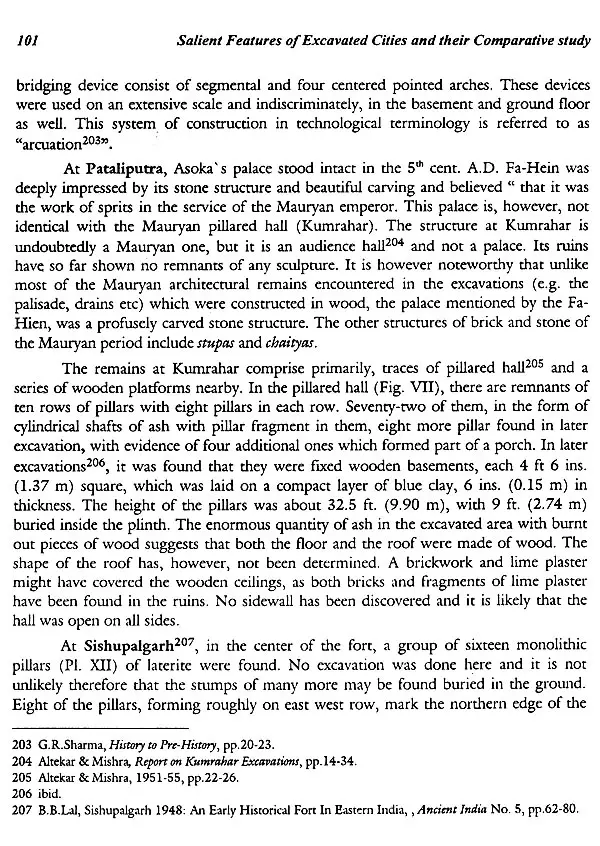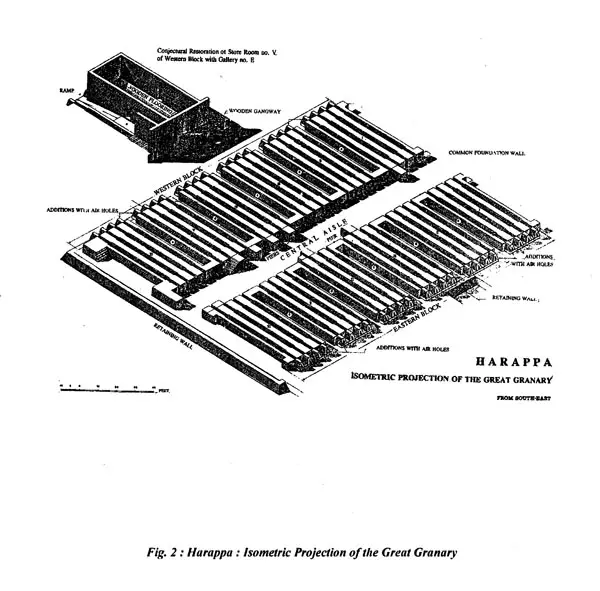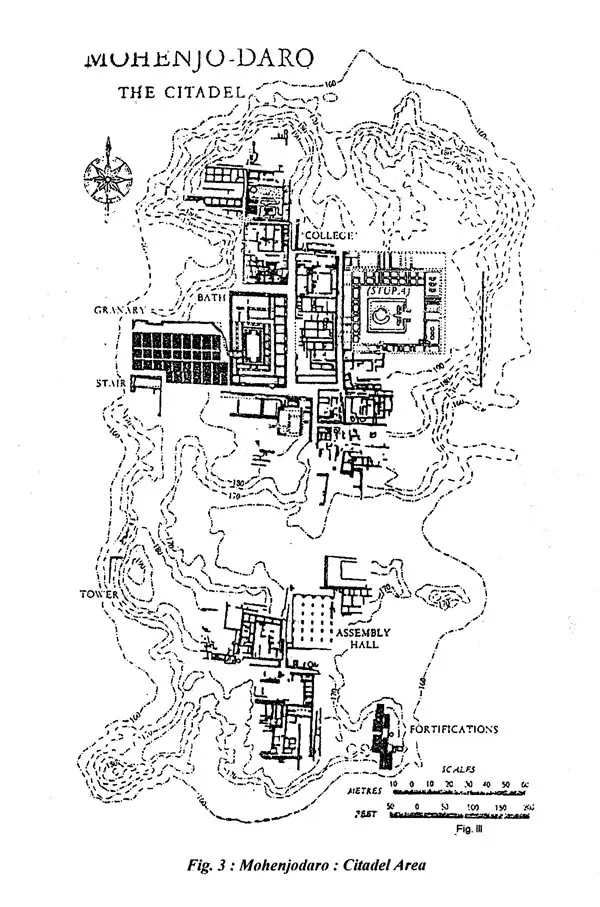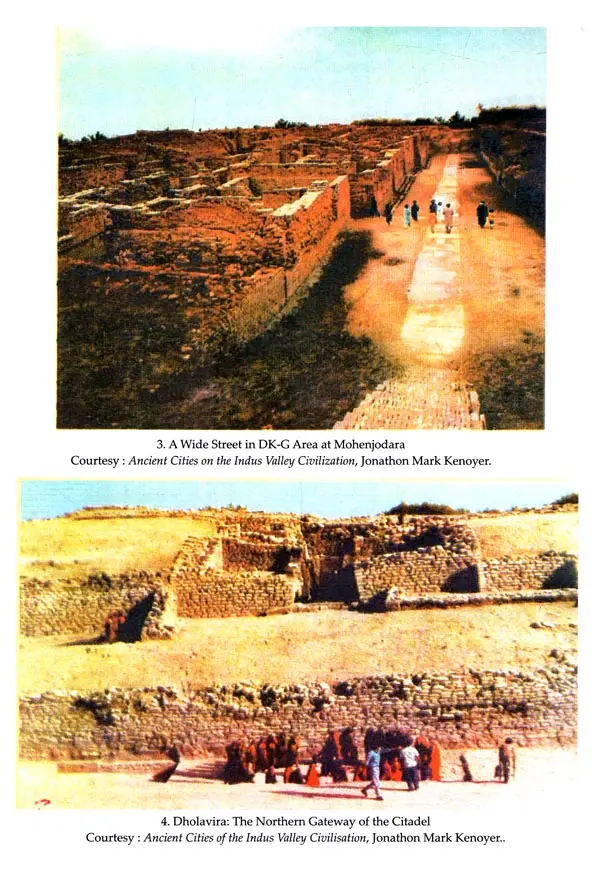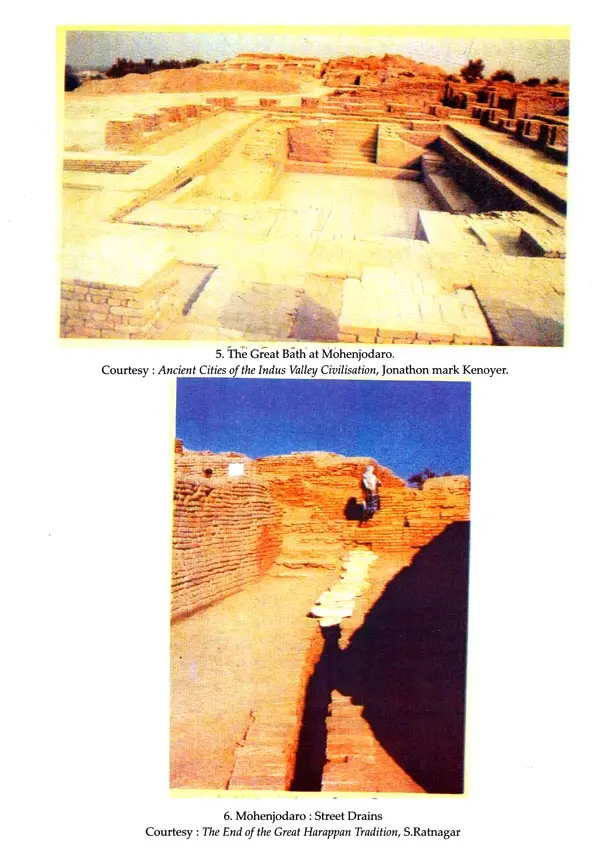
Ancient Indian Town Planning
Book Specification
| Item Code: | UAD584 |
| Author: | Akshat Kaushik |
| Publisher: | Literary Circle, Jaipur |
| Language: | English |
| Edition: | 2018 |
| ISBN: | 9788181820371 |
| Pages: | 214 (Throughout Color and B/W Illustrations with B/W Maps) |
| Cover: | HARDCOVER |
| Other Details | 11.50 X 9.00 inch |
| Weight | 920 gm |
Book Description
The study of urbanization in Ancient India is categorized into two periods. The first period is the mature Indus civilization, which lasted between 2800 B.C. and 1700 B.C. The second period of early Indian urban growth is generally supposed to have begun around 600 B.C. This coincides with the beginning of the early historic period in the Ganga valley.
This book analyzes the primary sources, the available literary and archaeological data (published report.) from various sites of the first and second urbanization and cull out information on town planning and architecture of these ancient cities in order to formulate the essentials/ fundamentals of town planning in ancient India as developed over centuries.
In this book, a comparative study of the town planning and town architecture of different ancient cities of the two distinct periods is presented. The study reveals several elements of planning, commonly used during the first phase of urbanization were also found in the second phase. This analysis leads us to assume that certain elements of planning which were found in the second phase were the legacy, which was carried down from the first phase.
The book has been divided into three parts. The first discusses the historiography on Urbanisation and planning, while the second carries a comprehensive account of the literary data pertaining to planning. This data though is restricted to the sites of only the second phase. The third part deals with the comparative analysis of the elements of architectural planning from the sites of the first and the second urbanization.
Dr. Akshat Kaushik was awarded his M.A. in Ancient History & Culture from M.J.P. Rohikhand University, Bareilly and Doctoral degree from the same institution. He was awarded the I.C.H.R. Fellowship for his research project. He also obtained a Post Graduate Diploma in Archaeology from the Institute of Archaeology, Archaeological Survey of India. He has participated in several archaeological excavations of national importance like Sravasti, Dholavira, Govishan, Adi-Badri etc.
He has also participated in several archaeological sites. He has also presented several research articles in national and international Seminars and Conferences, which are published in Journals of national and international repute. He has also participated in a course on Numismatics from Indian Institute of Research in Numismatics Studies, Nasik. At present he is working with the Archaeological Survey of India, in the capacity of Assistant Archaeologist.
Brief Introduction of the topic:
In India studies pertaining en the processes and manifestations of urbanization arc growing rapidly in a Social Sciences. The economists undertake derailed survey of growing towns, the sociologists study neighborhoods, 'rural urbanities', and urban dine; and for political scientists, who are interested in psephology and local government, the town is the base.
This interest has emerged as a necessary corollary of the accelerated pace at which urbanization has occurred in India after World War II, more particularly with Industrialization, which followed the second plan. Acute urban problems, overcrowding, slum growth, pollution, inadequate transport, and lately urban violence; factors like these have led to the spot light being turned on the towns, especially the bigger ones. The census surveys, with their multifarious queries and concentration on population and occupational profiles, have also served to develop interest in urban problems. By now, urban planning and regional studies increasingly attract the attention of social scientists and policy framers.
Significantly, the growing volume of contemporary urban studies has a fairly slender base in history. The kind of issues with which said scientists deals are relatively historical; they focus on problems, which are of fairly recent origin. Not teeny researchers fed the need for the historical dimension. Secondly, not many historians have so for opted to work on themes of urban history. This area, thus, a tepidly growing field of studies in the west, remains relatively unexplored, and under worked in India.
With the background I opted for the present topic of research, which basically deals in the planning patterns of the first and the second urbanization.
The urban history of the Indian subcontinent goes back to the Harappan culture i.e. 2300B.C.-1700B.C. After that there is a hiatus of 1100 years and noon re-emerges in 600B.C., which flourished up to the Kushana period. A comparative study of towns of both the phases of urbanization revealed several points of differences, which are as under:
One important difference is geographical or ecological. The Harappan area is an arid to semi-arid zone without much rainfall. The Harappan zone may have floods, inundation and so on but not the type of alluvial soil covered with thick vegetation Mat characterizes the middle Gangs plains. Since rainfall in that area is slight the problem of forest clearance did not exist. The Gangetic area, on the other hand has a heavy rainfall, creating an entirely different environment. Whereas bronze and even stone tools could be effective in the Harappan area, facilitating large-scale settlement, the thick forests in the tutorial soil of the middle Ganga plan would render such tools ineffective. Thus, we have urbanism in the Harappan area in the Bronze Age, and in the middle Ganga plains in the Iron Age, when iron tools appeared for the not time on a considerable scale and boosted agricultural production. They were instrumental in ostensive foot clearance, and in the production of the surplus much over and above something that could be used for supporting rulers, priests, craftsmen, specialist artisans, army men, etc. living in the town. This surplus could be in the form of taxes and tributes or even in the middle Ganga valley is a new kind of phenomenon as compared to what we have in the arid, semi-arid plains of Sind and the Punjab, associated with Harappan urbanism.
The other difference is in the use of metal money3. In the Bronze Age culture we do come across references re the pieces of silver being used in Mesopotamia though there were various other ways and means of carrying on transactions. But in that aloe nothing like coined metal money, standardized, authorized, and recognized by the state was used. That feature appears in the old world only towards the end of the seventh cent. B.C. And in India, so far as the actual coins are concerned they are not earlier than 500 B.C. if we go by archaeological evidences. Coins by themselves do not mean much, but they are an indication of the type of economic activity that began; they show commodity production and exchange though on a small scale. With commodity production, there was a new type of distribution hi which middlemen played a vital part. All this led to trade, which was enormously facilitated by rite use of coins. Once coins came into being, they led to many changes. The coins become a far more convenient mode of exchange than numerous previously existing, other objects including cattle. Metal money was not easily perishable. One could easily add and subtract; bookkeeping become easy. It also became possible to transport coins easily from one place to another, it was not easy to transport a hogs number of cattle. The coins became associated with the towns of the middle Gangs plains on a considerable scale.
